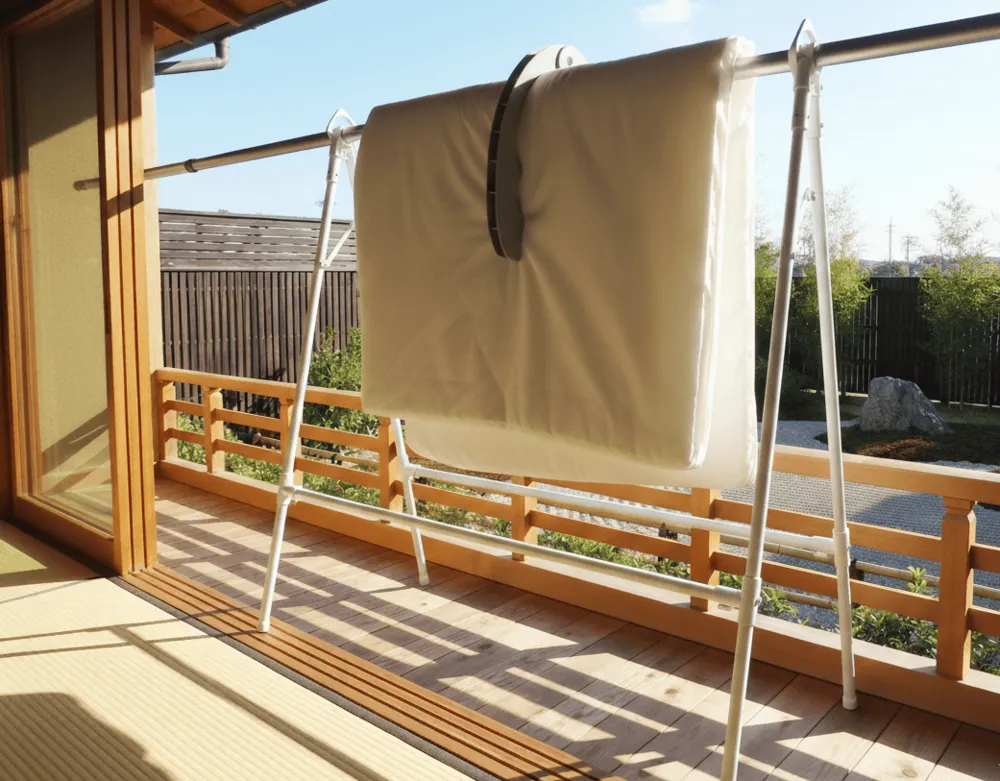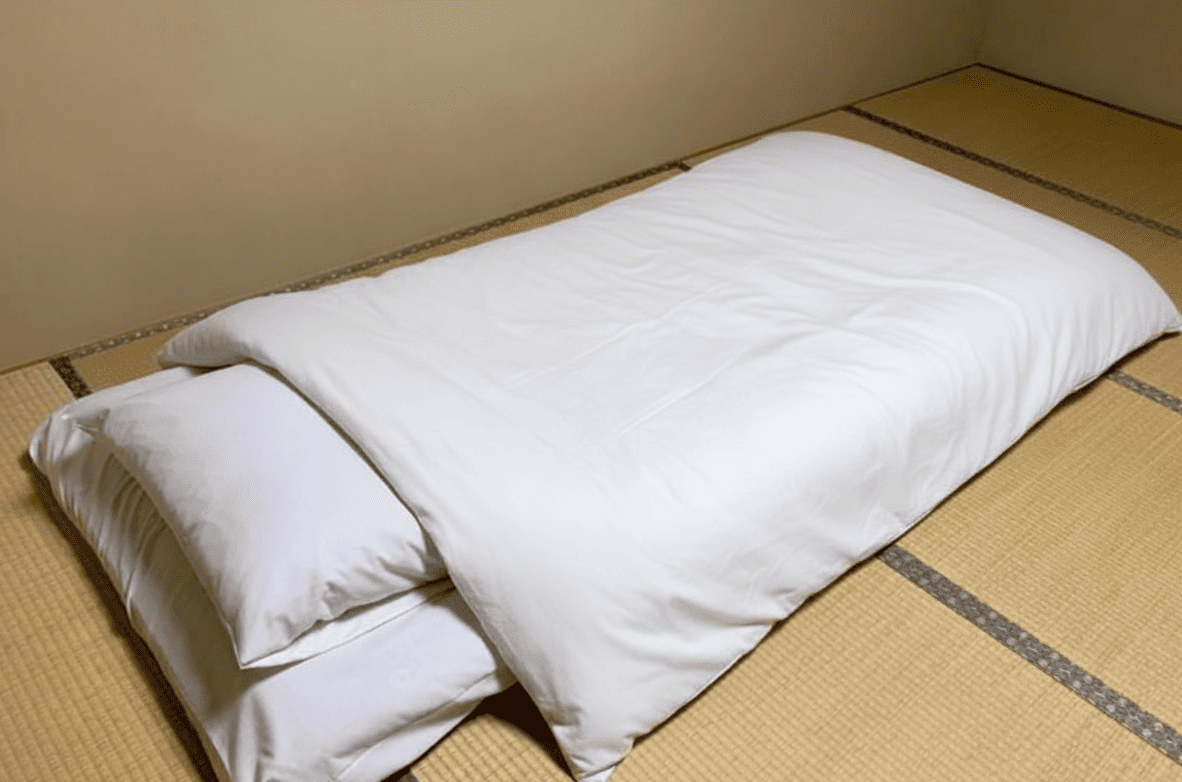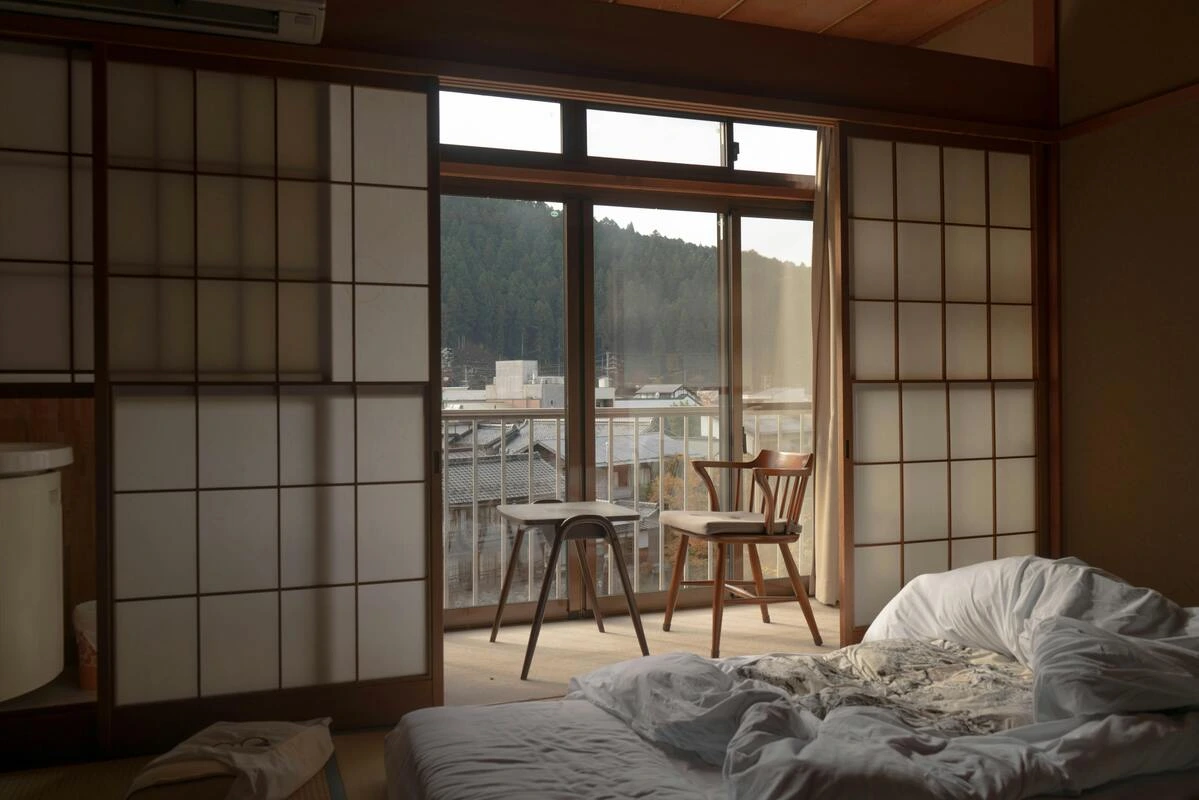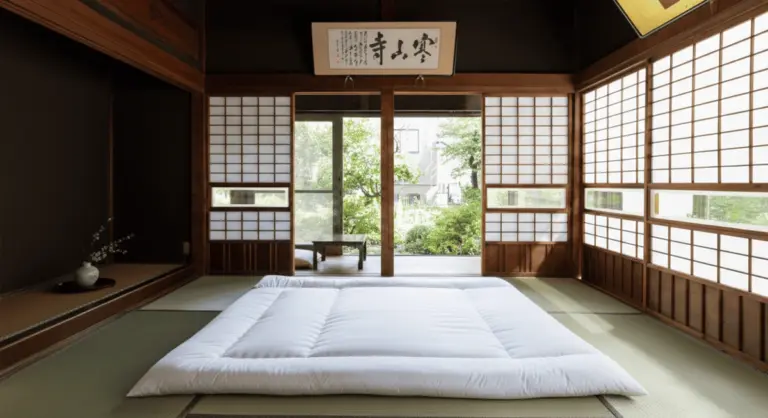Japanese Futon (Shikibuton) Guide: Pros, Cons & Best Options
If you wanna try Japanese futons outside of Japan, here is the guide for you.
Japanese futons—sometimes called shikibuton in Japan—are thin, foldable mattresses traditionally placed on tatami mats. They’ve become popular for minimalist living, breathable natural materials, and firm support. This guide explains what a shikibuton is, the pros and cons, how it compares to Western mattresses, care tips, and the best options available in the US.
What is a Japanese Futon (Shikibuton)?
A futon is a cotton-filled mattress about 6–8 cm (2.5–3 inches) thick, designed to be folded and stored daily. Unlike a Western sofa-bed or couch, a shikibuton is solely for sleeping and pairs well with tatami or a thin, breathable mat.
In recent years, more people in Japan have been sleeping in beds, but futons are still a popular form of bedding, and modern styles of futons have also become increasingly available.
Benefits of a Japanese futon
- Space-saving: Folds and stores to free floor space—ideal for small apartments.
- Breathable and natural: Cotton fill helps regulate temperature and avoids foam chemicals.
- Firm support: Encourages neutral spinal alignment; many back sleepers prefer it.
- Cost-effective: Quality options are generally cheaper than premium mattresses.
Japanese Futon Drawbacks and Considerations
- Maintenance: Needs regular airing or drying to prevent moisture buildup.
- Firmness: May feel too firm at first; a thin topper can ease the transition.
- Humidity risks: In damp climates, mold/dust mites can develop without care.
- Lifespan: Typically replaced after 3–5 years; with good care (sun-drying or a futon dryer), high-quality futons can last 5–10 years.
Japanese Futon vs Western Mattress
Sleeping Experience
Shikibutons are thin, firm, and low profile; Western mattresses are thicker and often plusher.
Health Considerations
Futons can aid posture for back sleepers; side sleepers may add a thin topper for shoulder/hip comfort.
Lifestyle Fit

Shikibutons suit minimalist, multi-use spaces; Western mattresses suit fixed, permanent bed setups.
Best Japanese Futons You Can Buy in the US
- Fuli Japanese Traditional Shikibuton: 100% cotton, made in Japan, lightweight.
- D&D Futon Furniture Shikibuton: US-made, thicker pad, budget-friendly.
- EMOOR Futon Set: Made in Japan; futon + comforter + pillow; durable cotton.
- Nishikawa Shikibuton: Founded in 1566; a heritage bedding brand with premium quality—availability in the US can be limited.
Japanese Futon Care & Maintenance

- Air/Sun-dry regularly: If possible, hang outdoors or near a sunny window. Where outdoor drying is difficult, use a futon dryer or dehumidifier. In Japanese, sun-dry is called “Tenpiboshi”.
- Cleaning: Use washable covers; spot-clean mild stains.
- Storage: Fold into thirds; store in breathable bags with cedar/charcoal sachets.
Japanese Futon Setup Tips

- Use futon with tatami (or tatami-style mat).
Futons and tatami are traditionally paired together, and using them as a set is best not only for functionality but also for appearance. If you plan to use a futon, it is highly recommended to use tatami as well. However, since converting your flooring to tatami can be quite difficult, purchasing a tatami mat to use alongside the futon is a good alternative. - Consider adding a thin, firm mattress designed to be placed under a futon.
A futon is meant to be placed on tatami, which provides some cushioning unlike the hardwood floors common in Western houses. Placing a futon directly on a wooden floor may feel too firm, so in that case, you can add an extra mattress underneath.
Conclusion
A Japanese futon offers minimalist flexibility, natural comfort, and firm support—provided you care for it properly. If you value space, breathability, and a clean aesthetic, a shikibuton is a compelling, affordable alternative to bulky mattresses.





こんにちは、これはコメントです。
コメントの承認、編集、削除を始めるにはダッシュボードの「コメント」画面にアクセスしてください。
コメントのアバターは「Gravatar」から取得されます。